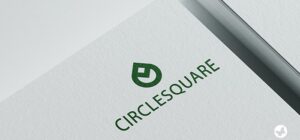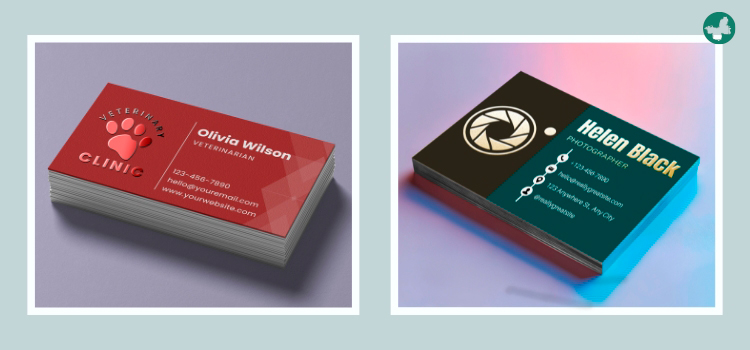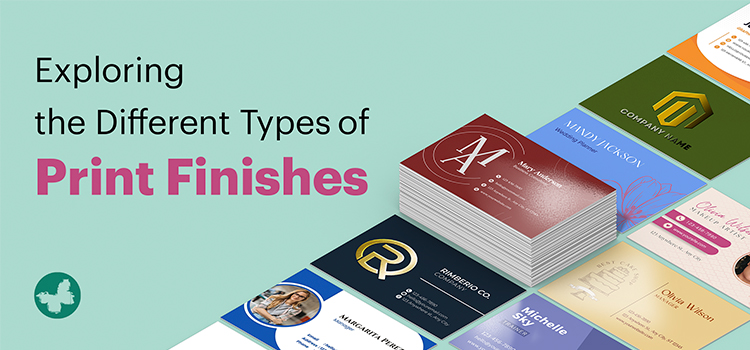Print finishes apply the final touches to a printed product after the ink has dried. They can enhance the appearance, durability, and functionality of the print, as well as add some extra flair and creativity. Types of print finishes can range from simple coatings to complex effects that require special equipment and skills. In this article, we will explore some of the most common types of print finishes and how they can improve your print projects.
Contents
What Is Print Finish?
A print finish is any process that modifies the surface of a printed product, such as paper, cardstock, or fabric. You can apply print finishes for various purposes, such as:
- Protecting the print from damage, wear and tear, or environmental factors.
- Improving the quality and clarity of the print, such as enhancing the colours, contrast, or sharpness.
- Adding texture, dimension, or shine to the print, such as creating embossed, debossed, or glossy effects.
- Making the print more interactive or functional, such as adding magnets, stickers, or perforations.
Different types of print finishes can be classified into two main categories: coatings and special effects.
Coatings

Coatings apply thin layers of material to the surface of the print, either by spraying, brushing, or rolling. They can be either transparent or coloured and can have different finishes, such as matte, glossy, or satin. Coatings can serve various functions, such as:
- Sealing the ink and preventing it from smudging or fading.
- Enhancing the appearance and feel of the print, such as making it smoother or shinier.
- Providing resistance to water, stains, scratches, or UV rays.
Some examples of coatings are:
- Varnish: A clear liquid that is applied to the whole or part of the print to give it a glossy or matte finish. Varnish can also be used to create spot effects, such as highlighting certain areas or creating patterns.
- Lamination: A plastic film that is heated and pressed onto the print to give it a protective layer. Lamination can also have different types of print finishes, such as glossy or matte. Lamination can make the print more durable and water-resistant.
- UV Coating: A clear liquid that is cured by ultraviolet light to create a hard and shiny surface. UV coating can make the print more vibrant and resistant to scratches and fingerprints. High-gloss UV business cards and raised spot UV business cards are good examples of this special finish.
Read More: Varnish or Lamination: What Is the Difference?
Special Effects

Special effects are processes that alter the shape or appearance of the print by using physical tools or techniques. They can create more attractive results than coatings, but they can also be more expensive and time-consuming. Special effects can give your print a unique and distinctive look that can impress your audience and convey your message more effectively. Choose your print partner company carefully because applying special effects can also require more equipment and skill. Some examples of special effects are:
- Die Cutting: A process that uses a metal blade (die) to cut out shapes from the print. Die cutting can be used to create rounded corners, windows, pop-ups, or custom shapes.
- Embossing: A process that uses a metal plate (emboss) and pressure to create raised impressions on the print. Embossing can be used to create textural effects or highlight logos or images.
- Foil Stamping: A process that uses heat and pressure to transfer a thin layer of metallic foil onto the print. Foil stamping can be used to create shiny accents or decorative patterns.
Benefits of Using Print Finishes
Print finishes are strong choices if you want to enhance the impact and value of printed materials by improving their quality, appearance, and efficacy. By increasing the engagement and memorability of printed materials, these strategies can also help marketers achieve their objectives and enhance a brand. Let’s take a closer look at the benefits of print finishes:
Improved Visual Appeal
Adding a posh and striking appearance to printed materials through print finishes like foil stamping, varnishing, and lamination can increase their memorability. The printed item can gain depth and dimension by using techniques like die-cutting, embossing, and debossing to produce tactile and eye-catching effects. Images and text can stand out thanks to specific finishes that improve colour clarity and vibrancy.
Improved Durability
The lifespan of printed materials can be increased by applying print finishes like lamination and varnishing, which shield them from smudges, scratches, moisture, and general wear and tear. For frequently handled materials like menus, business cards, and training manuals, this is especially helpful.
Presenting Yourself Professionally
Print finishes leave a good impression on the recipient by exuding professionalism and quality. Print finishes can strengthen brand identity and leave a lasting impression by producing materials that are both aesthetically pleasing and long-lasting. A brand can stand out and attract attention in a world of digital noise by using print materials with well-considered finishes.
Adaptability and Personalization
Numerous print finishing techniques are available, enabling customization and solutions that are specifically designed for various projects. The overall impact of the printed material can be increased by carefully selecting finishes that complement the target audience and brand identity.
Utilizing print finishes can help achieve marketing and communication objectives by giving the recipient a more interesting and memorable experience.
How to Find the Right Print Finish for Your Project?
Choosing a print finish depends on several factors, such as:
- The purpose and audience of your print project. For example, if you are printing a business card, you might want to use a lamination or varnish coating to protect it from wear and tear and a foil stamping or embossing effect to make it stand out from others. If you are printing a flyer or brochure, you might want to use a UV coating or die-cutting effect to make it more attractive and memorable.
- The type and quality of your paper material. For example, if you are using thick and textured paper, you might want to avoid using a glossy coating or foil stamping effect that might clash with its natural look. If you are using thin and smooth paper, you might want to use a matte coating or embossing effect that might add some contrast and depth.
- The budget and time frame of your print project. For example, if you have a limited budget and time frame, you might want to opt for a simple coating that is easy and cheap to apply. If you have more resources and flexibility, you might want to experiment with different special effects that might require more skill and equipment.
Conclusion
Print finishes are an important aspect of any print project. They can make your print more attractive, professional, and memorable to your target audience. There are many types of print finishes to choose from, each with its advantages and disadvantages. Certain finishes can add texture, dimension, or shine to your print, such as creating embossed, debossed, or glossy effects. Additionally, some finishes make your print more interactive or functional, such as adding magnets, stickers, or perforations.
By considering the purpose, audience, material, budget, and time frame of your print project, you can select the best print finish for your needs. ButterflyGP offers various types of print finishes for different print products. Whether you are planning for your next marketing campaign or looking for display solutions for a trade show, ButterflyGP is here to help you achieve your goals. Send your order now!
